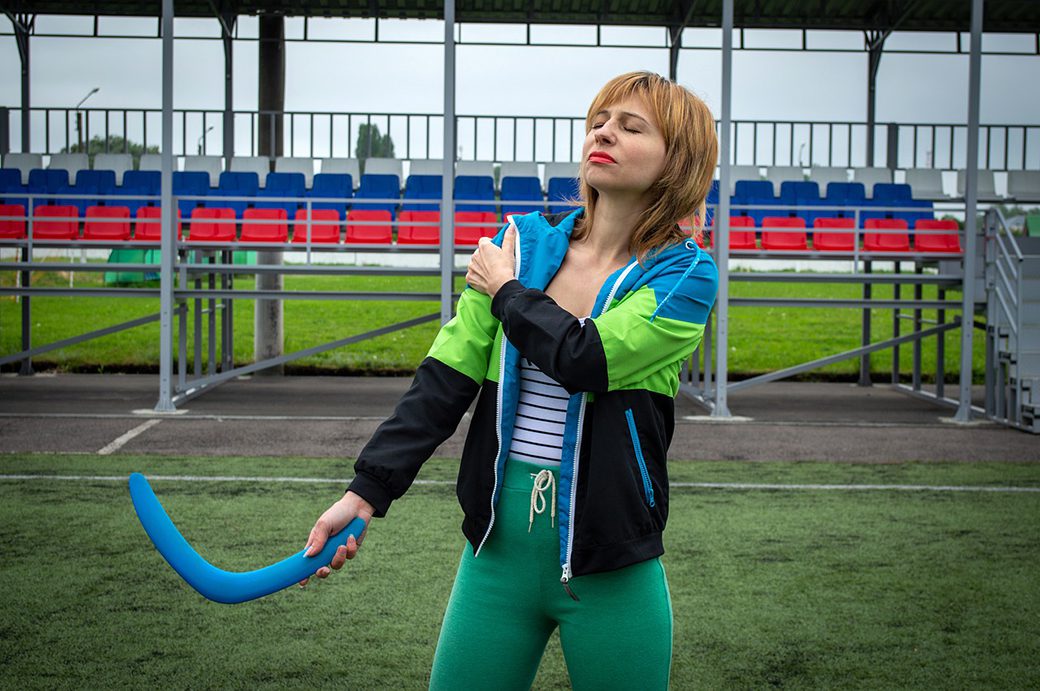Anyone who has ever played sports or participated in any prolonged physical activity has likely experienced a sports injury. These types of injuries range from minor annoyances to major issues that require medical attention. No matter the severity, it’s important to know which type it is: acute or chronic sports injuries.
Acute sports injuries are those that happen suddenly and are usually the result of trauma to the affected area. An acute injury is caused by a specific, identifiable incident. Chronic sports injuries, also known as overuse injuries, happen over time and aren’t caused by a single incident.
How Do You Identify Acute and Chronic Sports Injuries?
There are several ways to identify both acute and chronic sports injuries. Acute injuries are easy to identify by their cause. Whether it’s a fall during a run, a sharp pain that appears suddenly in the shoulder after throwing a ball, or a sprained ankle after a football tackle, the ability to point to one cause of the injury usually means it’s acute.
Acute injuries are characterized by:
- Sudden pain where there was none before.
- Swelling, redness, and tenderness in the area.
- Limited range of motion.
- An inability of the injured area to support the weight.
- A broken bone.
- Dizziness, headache, nausea, vomiting.
Chronic injuries are a little different, but they’re usually pretty easy to identify. The pain generally starts gradually, usually over weeks or even months. Certain activities, such as ones you do repetitively (running, throwing, playing tennis, swimming) may exacerbate the pain, but you won’t be able to point to a specific issue that first caused the pain.
Chronic sports injuries are characterized by:
- Pain and tenderness in the area, especially during and immediately after activity.
- Minor swelling and limited range of motion.
- Dull pain when resting.
Although these two types of injuries often have different causes (trauma for acute injuries and wear-and-tear for chronic injuries), they can both result in similar issues to the body. For example, rotator cuff injuries are common among many athletes, especially those that use their shoulders repeatedly, like tennis players, swimmers, and baseball players. To determine the nature of the injury, you may need to undergo a rotator cuff injury test, no matter if the injury is acute or chronic.
When it comes down to it, an injury is still an injury. And chronic injuries can make acute injuries more likely, while acute injuries can lead to chronic injuries if not treated properly.
What Are Some Examples of Chronic and Acute Sports Injuries?
Both chronic and acute injuries are pretty common in every type of sport. Whether it’s winter sports, the great American pastime, or even something low-impact like cycling, there’s an opportunity for both types of injuries. Here are some examples of the most common chronic and acute injuries.
Common Acute Injuries:
- Sprain and Strains
- Whiplash
- Concussion
- Rotator Cuff Tear
- Broken Bones or Fractures
- ACL Tears
- Dislocated Shoulder
- Stingers and Burners
Common Chronic Injuries:
- Runner’s Knee
- Tennis Elbow
- Shin Splints
- Achilles Tendon Issues
- Stress Fractures
- Swimmer’s Shoulder
- Spondylolysis
There are other injuries that can be the result of trauma, overuse, or both. These include:
- Herniated Disc(s) in the Back or Neck
- Musculoligamentous Strain
- Nonspecific Back Pain
Are Chronic or Acute Injuries More Common?
How likely you are to suffer an acute or chronic injury depends on the activities you participate in and how often you do so as well as your physical fitness and warmup routine. It seems that, in most organized sports, acute injuries are more common, while chronic injuries are more common among recreational and fitness activities.
A study evaluating all chronic and acute sports injuries among college athletes found that 29.3% of reported injuries were chronic and 70.7% were acute. A total of 573 athletes reported over 1300 injuries during the three-year study. And the athletes involved were from 16 different sports. Men’s cross-country track and field and women’s rowing had the highest reported number of overuse injuries. Football and wrestling had the highest number of acute injuries.
For college athletes, these findings are not surprising. But those who participate in recreational activities to stay fit and active are more likely to suffer chronic injuries than acute injuries. Activities like running, cycling, tennis, golfing, strength training, and swimming all result in more chronic injuries than acute injuries, especially for older adults.
What Are The Best Treatments for Acute and Chronic Sports Injuries?
Many minor acute injuries respond well to rest, ice, compression, and elevation, otherwise known as the RICE method. However, overuse injuries are a different story. In order to prevent the injury from getting worse and causing more problems, it’s best to see a sports injury chiropractor or physical therapist. These medical professionals can help your body heal while teaching you ways to prevent both acute and chronic sports injuries.

Common Chronic Sports Injury Treatments
Here are some common treatments you may experience when seeing a chiropractor or physical therapist for a chronic injury.
Chiropractic Adjustment
The musculoskeletal system takes the brunt of any sport injury, be it chronic or acute. But chronic injuries most often affect the bones, joints, or muscles — or all of the above. This is why chiropractic adjustments are increasingly popular among many athletes.
And it’s not just spinal adjustments these specialists do; they also do things like chiropractic knee adjustments, shoulder adjustments, and even hip adjustments.
Physical Therapy
Seeing a physical therapist for a chronic injury can prevent future injuries. A physical therapist can not only help you improve your range of motion, reduce pain and swelling, and help you increase your strength, he or she can also tell you why you have a chronic injury. Often these injuries are the result of improper form or inadequate warmups, both of which a physical therapist can help with.
Massage Therapy
Many athletes know the power of a good sports massage. They know that a sports massage isn’t the same as a spa massage. While they’re both relaxing and have similar benefits, a sports massage is used to help break up scar tissue, improve healing, increase circulation, and relieve pain from a chronic injury. They can help you get active again quickly while also helping prevent muscle injury.
At Better Health, we combine chiropractic adjustments, physical therapy, and massage under one roof. You can experience these powerful treatment options all at the same place, saving you time and money while helping you heal from your sports injury quickly. Contact us at Better Health Alaska today to schedule an appointment!
Chronic and Acute Sports Injury: Conclusion
Whether you’re an athlete or you are simply staying active and having some fun with sports, acute and chronic injury are likely. For runners, swimmers, hikers, and cyclists, chronic injuries are more common. They sneak up on you and tend to stick around, getting worse if they’re not treated.
Those who mountain bike, ski, snowboard, or play contact sports are more likely to suffer from acute injuries, which can turn chronic if they aren’t allowed to heal properly. Telling these two injury types apart isn’t all that difficult when you know what to look for. Healing them is often the difficult part, but with the help of a professional, it can be quick and easy.
Resources:
https://www.niams.nih.gov/health-topics/sports-injuries
https://link.springer.com/article/10.2165/00007256-199418030-00004
https://www.ncbi.nlm.nih.gov/pmc/articles/PMC3418132/
https://journals.lww.com/acsm-csmr/FullText/2010/09000/An_Overview_of_Strength_Training_Injuries__Acute.14.aspx?casa_token=8sCDJWxhcOMAAAAA:CDEFNkTlCxFkl-77MtALBQAkttW0PqWwCj4masQzEcYOJNuwFKyZgHZ9npQoHhWgMKOPSbnkLyfcQACYGpuu7gg









